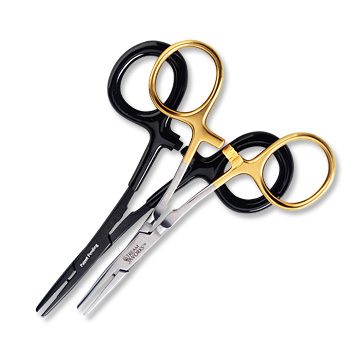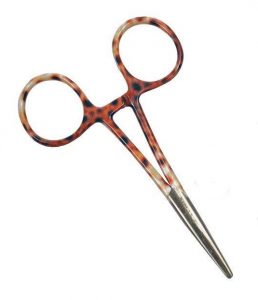
In the world of fly fishing, there is an endless array of gadgets designed to serve every purpose, from threading a fly, to removing a fly from a tree, to tying knots… If you have any task to perform in fly fishing that you find the least bit frustrating or unpleasant, chances are someone has invented a gadget to make it easier. But I’ve never been much of a gadget guy. I try to keep the number of items I carry on the stream to a minimum.
It’s funny how different folks have different priorities when it comes to what they carry with them. For instance, I never go into the backcountry without a daypack that includes a first-aid kit and the basic necessities (fire source, water purification, etc.) to spend the night if I have to. 99.9% of backcountry fishing trips go off without a hitch, but things happen. And I like to be prepared for the unexpected. I learned long ago that there is a name for people who go into the woods unprepared: “Statistics.” Yet, I regularly encounter fishermen deep in the backcountry with no such provisions. But they have fifteen different knot tying tools hanging from their vest!
I’ve taken a really long way around the barn to say that there are only two fishing “tools” that I routinely carry with me when I’m fishing: nippers and forceps. I’ve talked about nippers in another article. They are responsible for most of the work I’m doing with my line. Forceps handle pretty much everything else.
If you get in certain circles, mainly the medical community, someone might correct you and say, “Those aren’t forceps. They’re hemostats.” Another might refer to them as clamps. Maybe there are subtle differences in the three – I don’t know. But in fly fishing, the three terms are interchangeable and refer to a tool that looks kind of like a pair of scissors but with a nose more like a pair of pliers. While they come in slightly different shapes and sizes, most are fairly long and narrow and have a locking feature.
Forceps have a number of different uses but I mostly use them to perform three common tasks. If I need to crimp the barb on a hook, whether required by law or simply preferred, I use my forceps. If I need to squeeze a split shot on a leader, I use my forceps. And if I happen to hook a fish a little deeper in the mouth and the fly is difficult to reach without harming the fish, I use my forceps.
The locking feature is frequently used for hook extraction. I clamp the forceps on the hook and carefully remove it from the mouth of the fish. I also use the locking feature to clamp the forceps to my pack or shirt when they’re not in use. For these reasons, I greatly prefer a pair of locking forceps to pliers.

I also prefer to have forceps with flat jaws. Many forceps offered to you by your friend who works in the ER have grooved jaws. Those grooved jaws are great for many of the intended tasks in medical applications, but they can be a hindrance when trying to crimp the barb on a hook. Trout hooks are often so little that they work themselves into those grooves making it difficult to meet the barb with enough metal to flatten it.
The other downside to forceps made for the medical community is quality. I know, it seems strange that a fly fisherman’s forceps would be superior quality to a doctor’s. But medical forceps are often designed to be “single use,” so the metal used to construct them is inferior. They bend and rust easily. Forceps built for fly fishing are usually made of high quality stainless steel and built to last. And assuming you don’t lose them, they should last forever.
Beyond that, the only real differences in fly fishing forceps are shape, color, and features. Some designs have a variety of add-ons, such as scissor blades, which are great for anglers who use yarn for strike indicators. Color is sort of personal preference but there are also practical considerations.

When fishing for spookier trout like those in the Smokies, I prefer not to have the bright silver or gold forceps. I think they “flash” too much when the sun hits them, potentially spooking trout. But flat black ones are sometimes difficult to locate when you inevitably drop them in the water. I personally like the the “trout skin” colored forceps. Not only are the cool looking, but they’re dull enough not to reflect much light, yet light enough to see in the water.
As always, a lot of it boils down to personal preference. How do you want to carry them? How do you plan to use them? Do you care how they look? In any case, pick up a pair if you don’t have some already. You’ll use them a lot.

